Apple Watch Series 4 review – in pictures
Apple Watch Series 4 is the best reason yet to buy a smartwatch
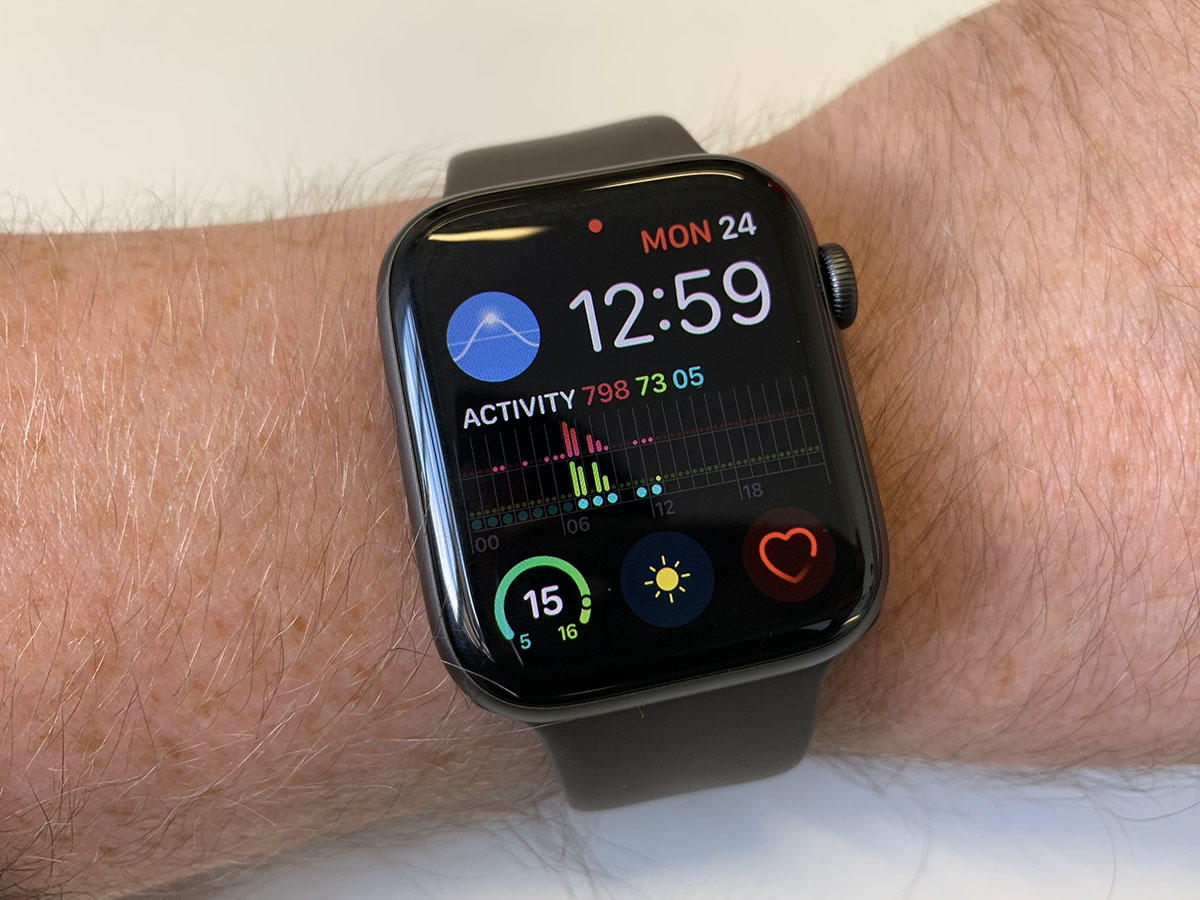
WATCH THIS SPACE
One of the most difficult questions we get asked by people is “Should I buy an Apple Watch?” While it’s a product that has done a lot of things well, it’s never felt essential, and there are products on the market (particularly fitness watches) that replicate a lot of its features for a much lower price. But with the Watch Series 4, Apple has created a product that’s so much better than any other smart watch out there that it’s easy to recommend to anyone with an interest in wearables. The biggest improvement has to be the comprehensive redesign, with bigger displays, a thinner form factor and new watch faces that display much more information than before.
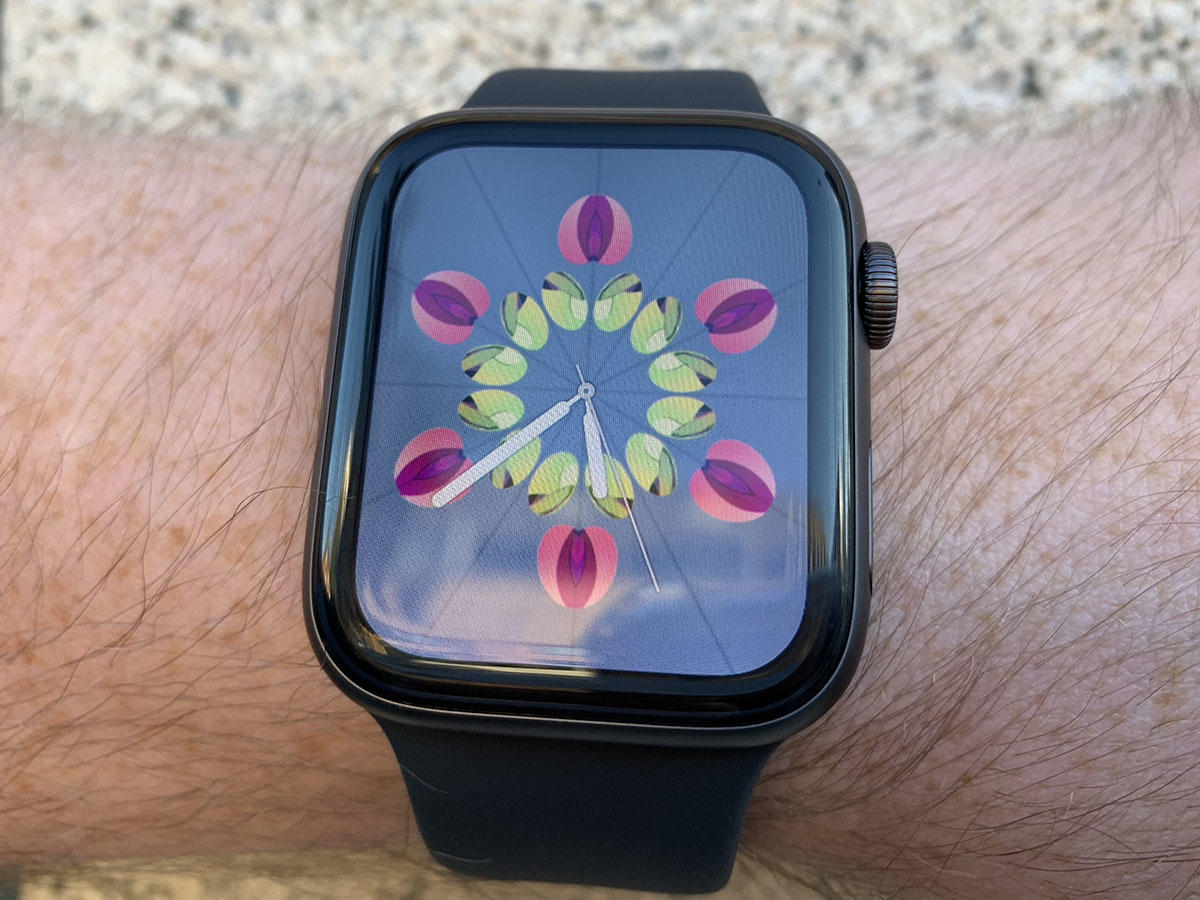
AN ESSENTIAL WEARABLE
But there are some serious feature improvements too, including a bigger internal speaker for calls, fall detection and emergency SOS, and an upcoming electrocardiogram that looks like it will be a genuine game-changer for smartwatches. The result is the first wearable that actually feels essential, combining fantastic design and great features that just aren’t available on other smart watches. The asking price for all models of the watch has gone up, sadly, but there’s plenty to recommend, and as a result we can now the answer the question of “Should I buy an Apple Watch?” with a resounding “Yes!”.

UPGRADE TIME
Watch Series 4 is the first major redesign to Apple’s wearable since it was originally unveiled in 2015. Series 4 brings a much-needed update to the whole design of the watch – nearly every component including the screen, Digital Crown and speaker has been improved, and for the better. First off, there’s the physical size of the device itself. Previously, Apple offered 38mm and 42mm options for the watch – now it’s been bumped up to 40mm and 44mm. However, the 44mm Series 4 model we tested feels smaller on the wrist than the 42mm Series 3, thanks to its tapered design and the fact that it’s 0.7mm thinner than before.
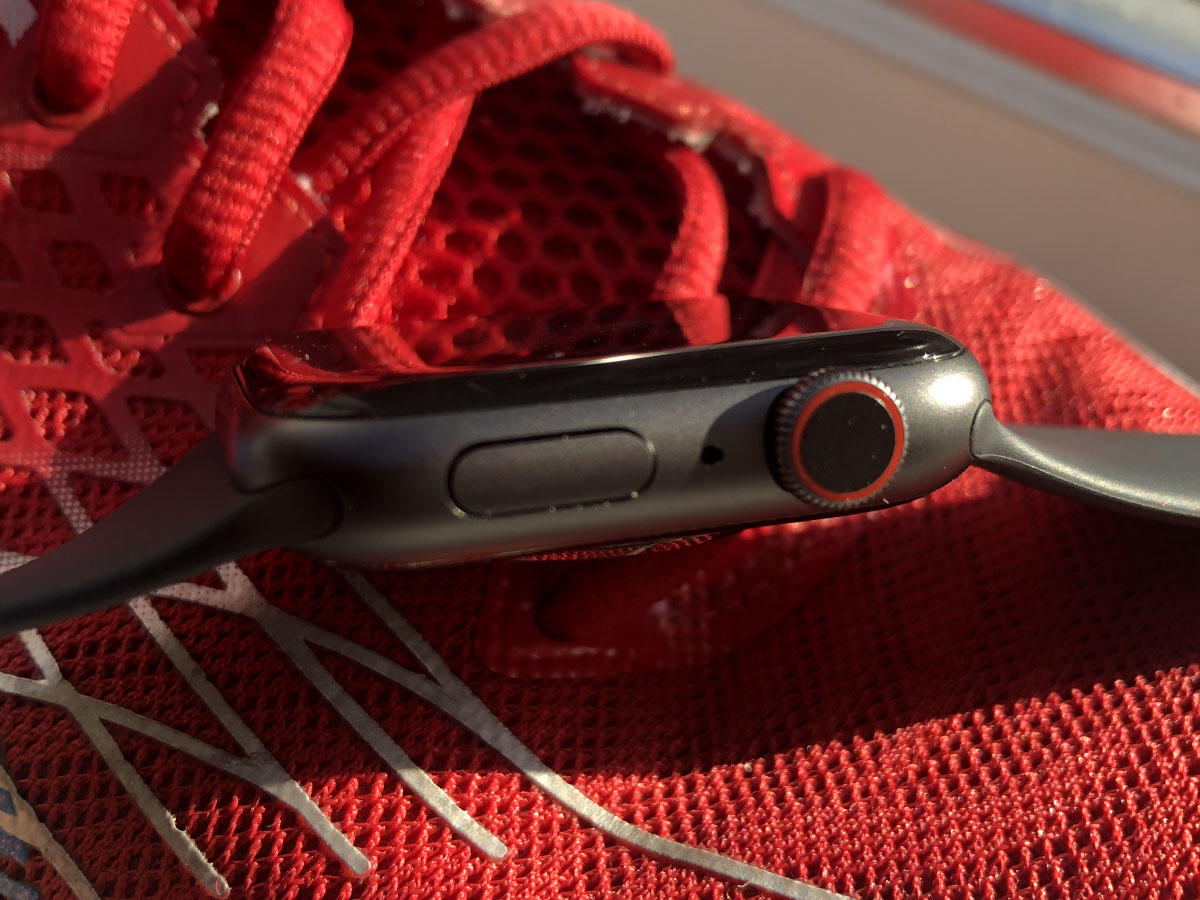
NOTICABLE IMPROVEMENTS
But it’s the displays that are the most noticeable improvement on the previous generation Apple Watch. Before, the Apple Watch had a square-format screen, with large bezels boxing in the display. On Series 4, the screen on both sizes has grown by at least 30 per cent, and features rounded corners that go right out into the edges. The result is a watch with a much larger display which can show much more information, so much so that the display on the smaller Series 4 40mm model is actually larger than the one on the Series 3 42mm model.
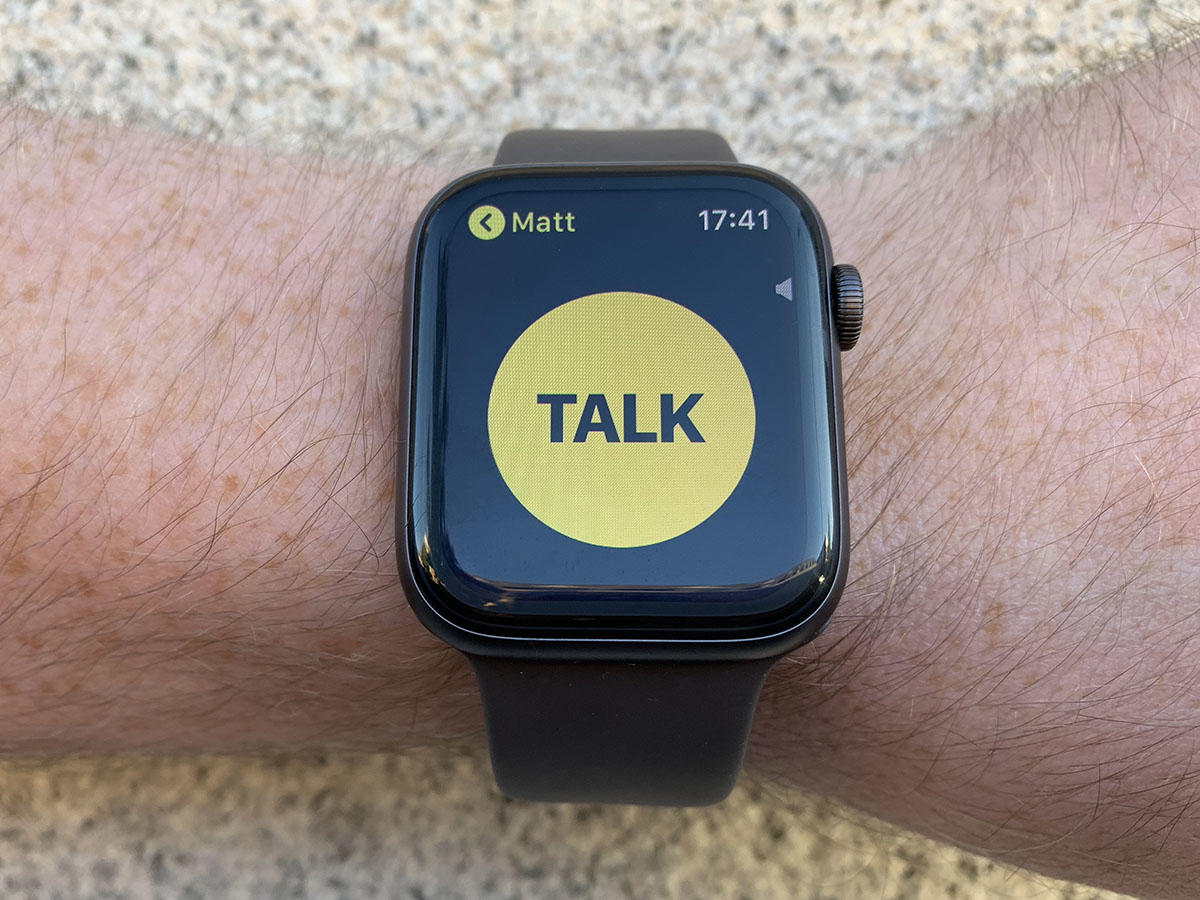
FACE TO FACE
Apple has created new watch faces to take advantage of this expanded real estate, with the new default, Infograph, with eight different widgets (or “complications”, as Apple calls them). These new widgets are particularly well designed in the corners of the screen, previous complications showed only the temperature, whereas the new version shows both the temperature and how that fits into both the high and low for the day. The downside to the Infograph face is that it’s actually a bit too much to take in, especially with all of the different colour schemes going on. But there are many other new watch faces as well, including new takes on the modular design and kaleidoscope, a Breathe face, plus a few analogue faces designed to really show off the bigger screen that feature slo-mo footage of fire, liquid and vapor.
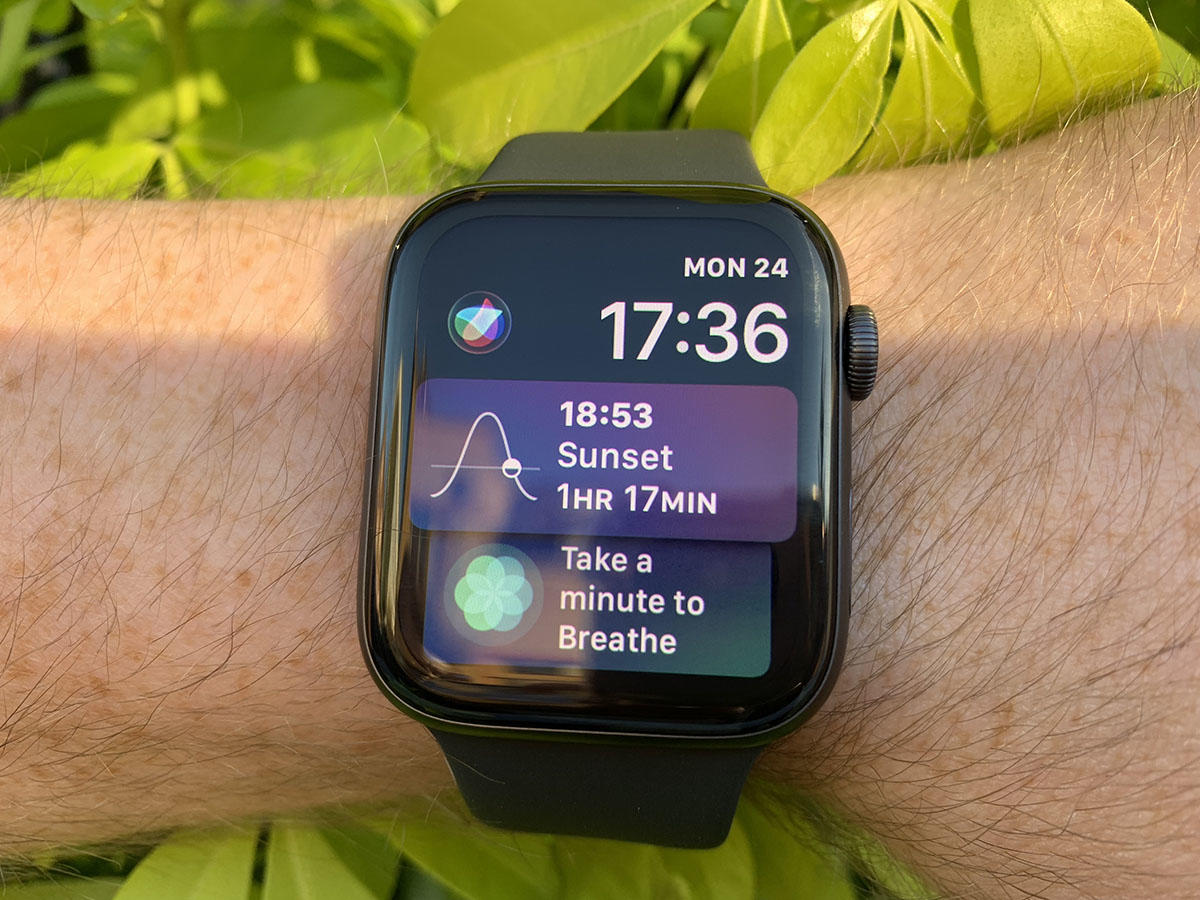
COSMETIC CHANGES
Personally, we found ourselves setting up two versions of the new Infograph Modular face: one for exercise, filled with activity data and weather info, and the other for work, filled with calendar info and world clocks. Another positive of the screen getting larger is that fonts are more legible and buttons are larger and therefore easier to press. There are some other more minor cosmetic changes as well. The big red dot that signified you had the cellular version of the Series 3 watch has been replaced with a much subtler red ring on the Digital Crown. This makes it less easy be ostentatious in front of friends (the cheapest cellular Series 4 watch is £499, plus the cost of the contract), but is certainly more stylish overall.
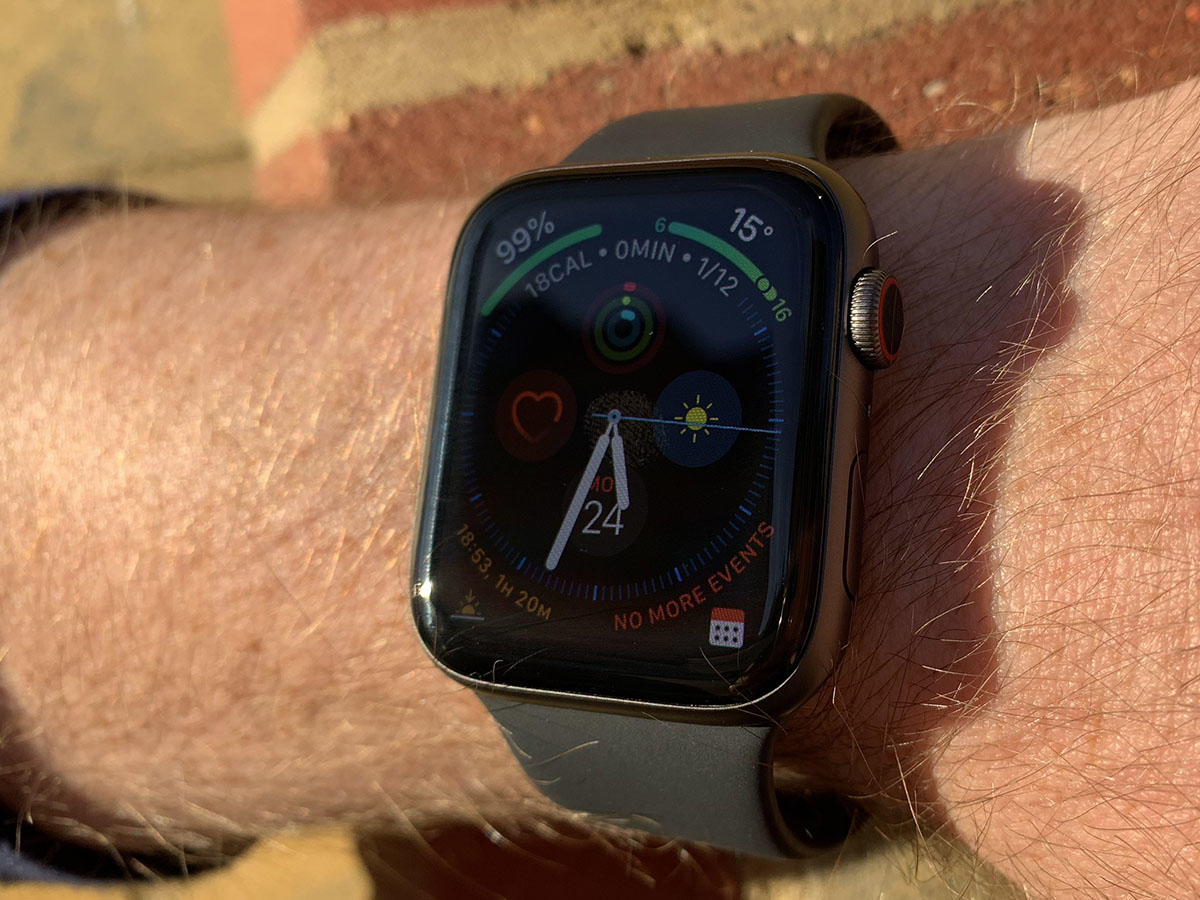
MINOR QUIBBLES
Our main criticism of the new design is that, while the corners of the screen are round, the watch itself isn’t, which will still put many people off wanting a more traditional watch design. Also, given how long the watch has now been available, we’d love to see Apple allowing third-party watch faces at this stage. But overall, the redesign of the watch is so comprehensive and crucially so good that frankly, it makes the Series 3 look seriously dated in comparison. Finally, the models that we reviewed were both Space Grey Aluminium (one cellular, one non-cellular). There is a new gold finish available, we particularly liked the new gold Stainless Steel model, but bear in mind it costs £320 more than the aluminium models.
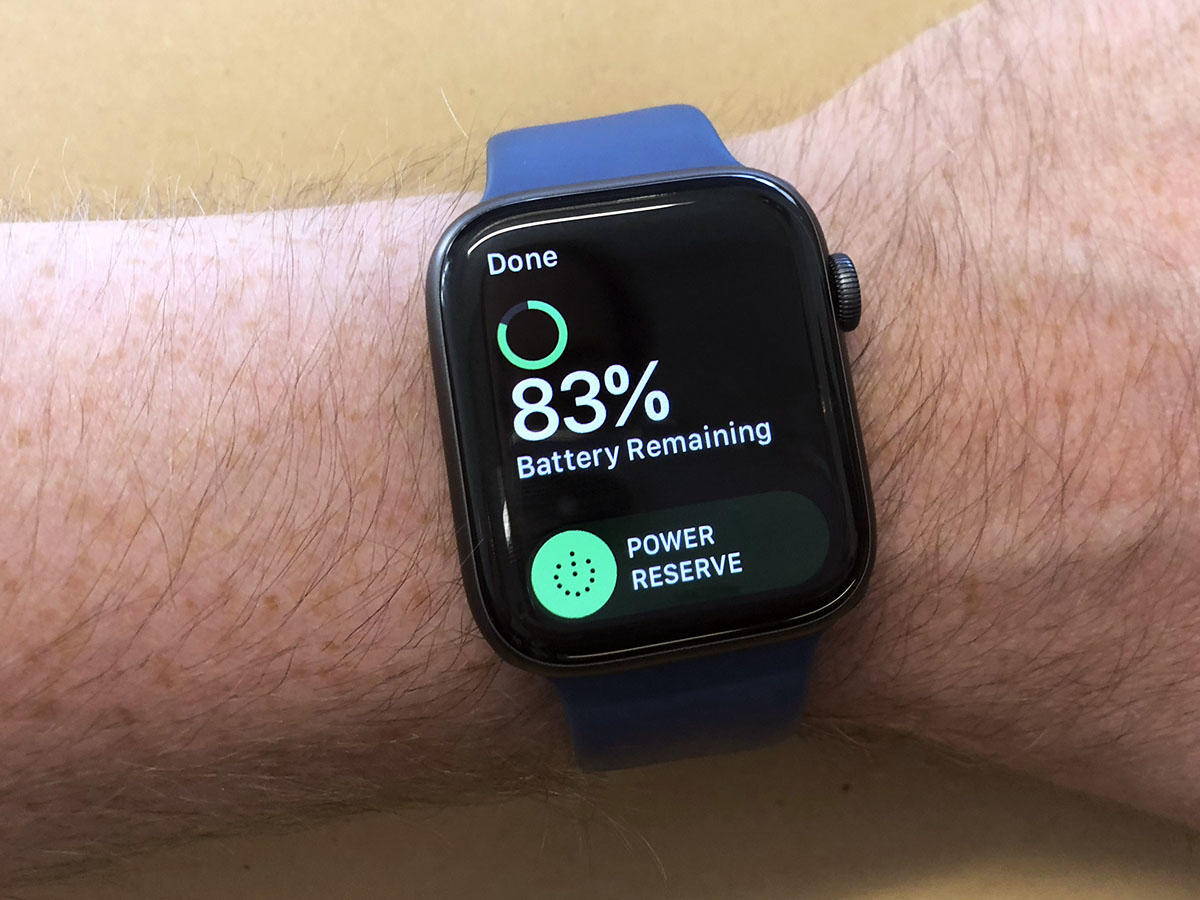
HEARTY UPGRADES
While the physical redesign is the biggest reason for most people to buy or upgrade to a Series 4, there are features on the Series 4 that make it a tempting offer… Let’s start with the headline new features that Apple’s been shouting about in the health space. Apple Watch Series 4 will use motion detection to sense when you trip, slip or fall, and then if you’re not active for 30 seconds afterwards, it will alert your emergency contact and tell the emergency services where you are. This feature is enabled by default for users over 65 and is optional for those under that age. In testing, we found it impossible to replicate a fall and actually try this feature out, but regardless of who you are or what age you are, it’s a good safety feature to have.
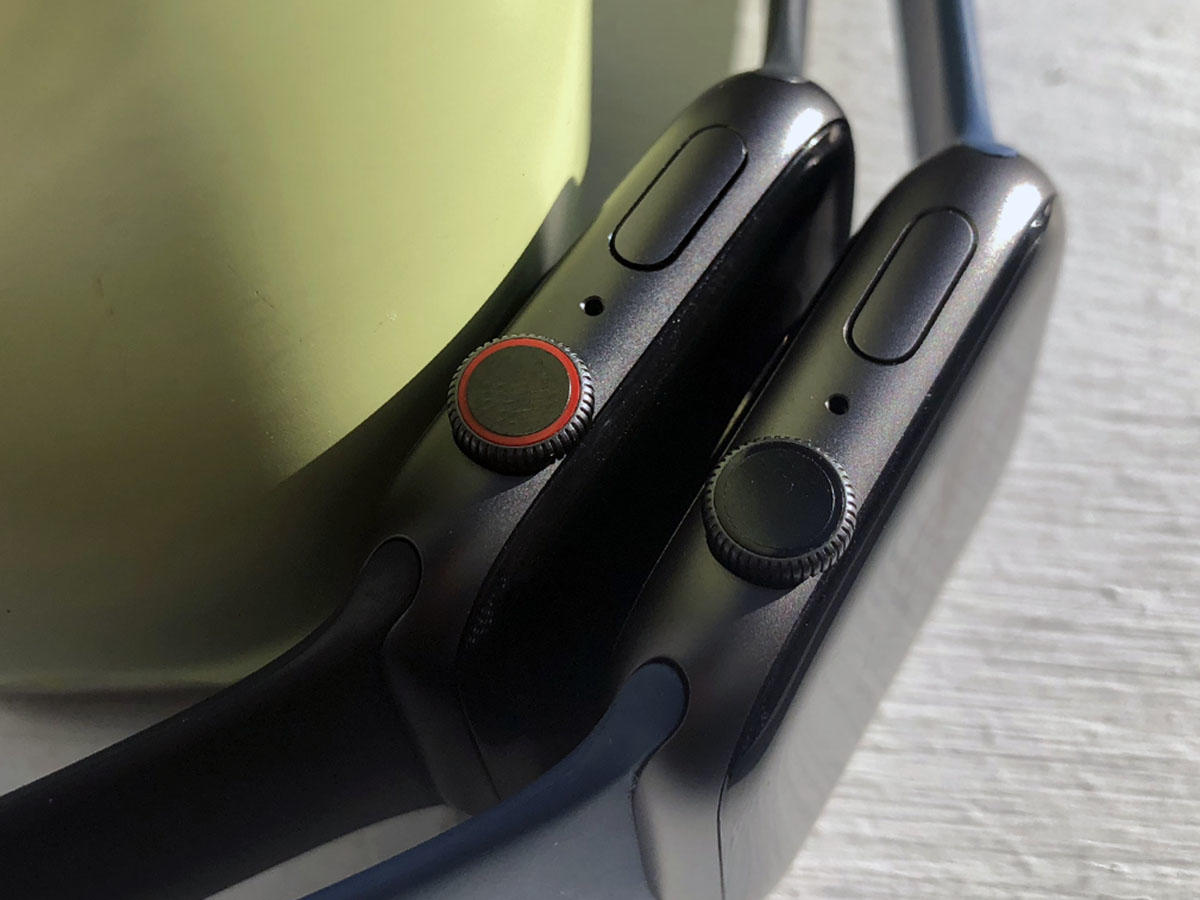
POWER FOR DAYS
Apple quotes the same 18-hour battery life for Series 4 as it did for Series 3, but we found this estimate to be conservative. In normal use (as in, not making excessive amounts of calls or doing 10K runs), we were able to get through two days of charge. As a result, we’d now really like to see Apple offering an always-on display option. There are still multiple occasions each day when we’d turn our wrist to activate the watch, and it wouldn’t register – having it always-on would mean it’d feel much more like a regular watch.
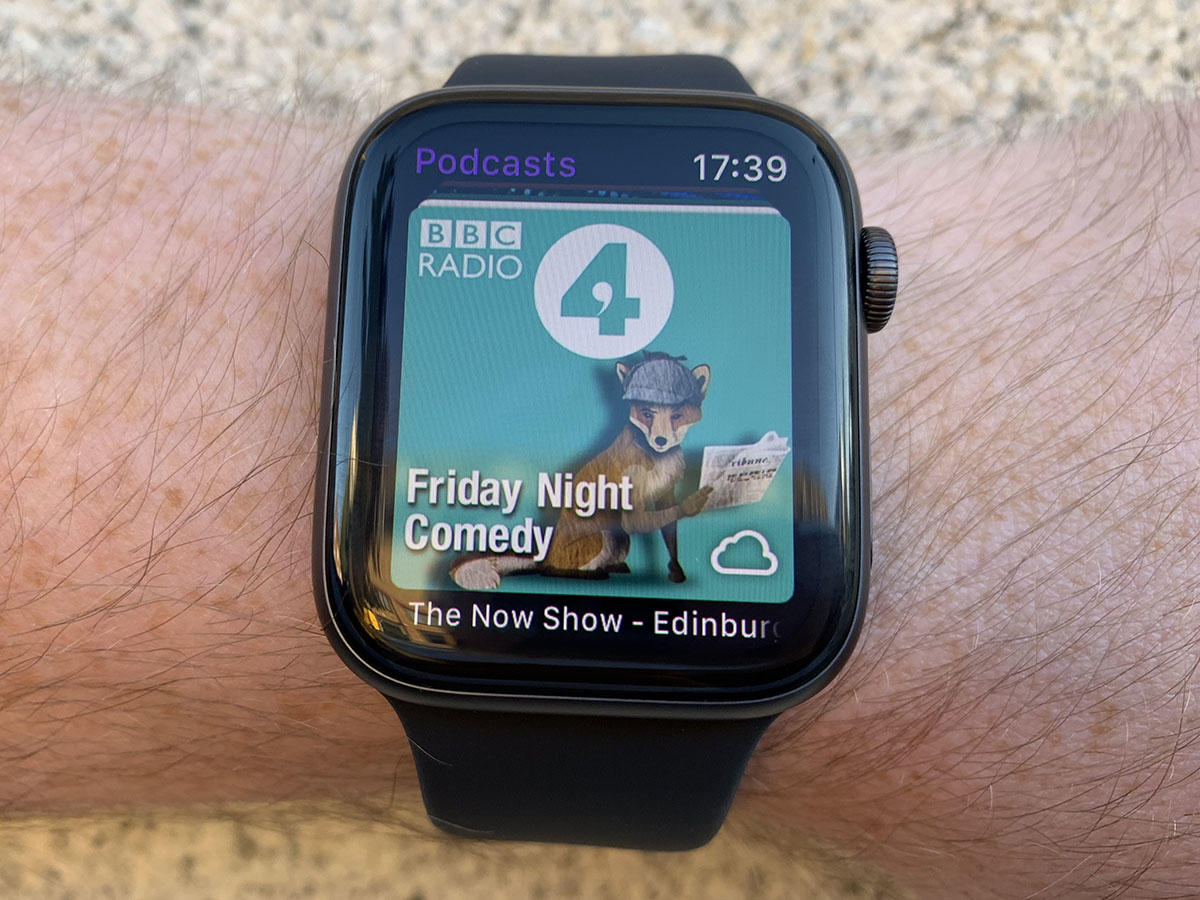
WALKIE TALKIE
There are also a host of feature improvements that come in with watchOS 5, but bear in mind they’re also available to all Apple Watch owners apart from the very first “Series 0” generation. They include a new Podcasts app which allows you to listen to shows away from your phone, a new Walkie Talkie app that allows you to send and receive messages between friends, Activity Challenges between friends, and low resting heart rate alerts. For more on these and more, check out our watchOS 5 feature.
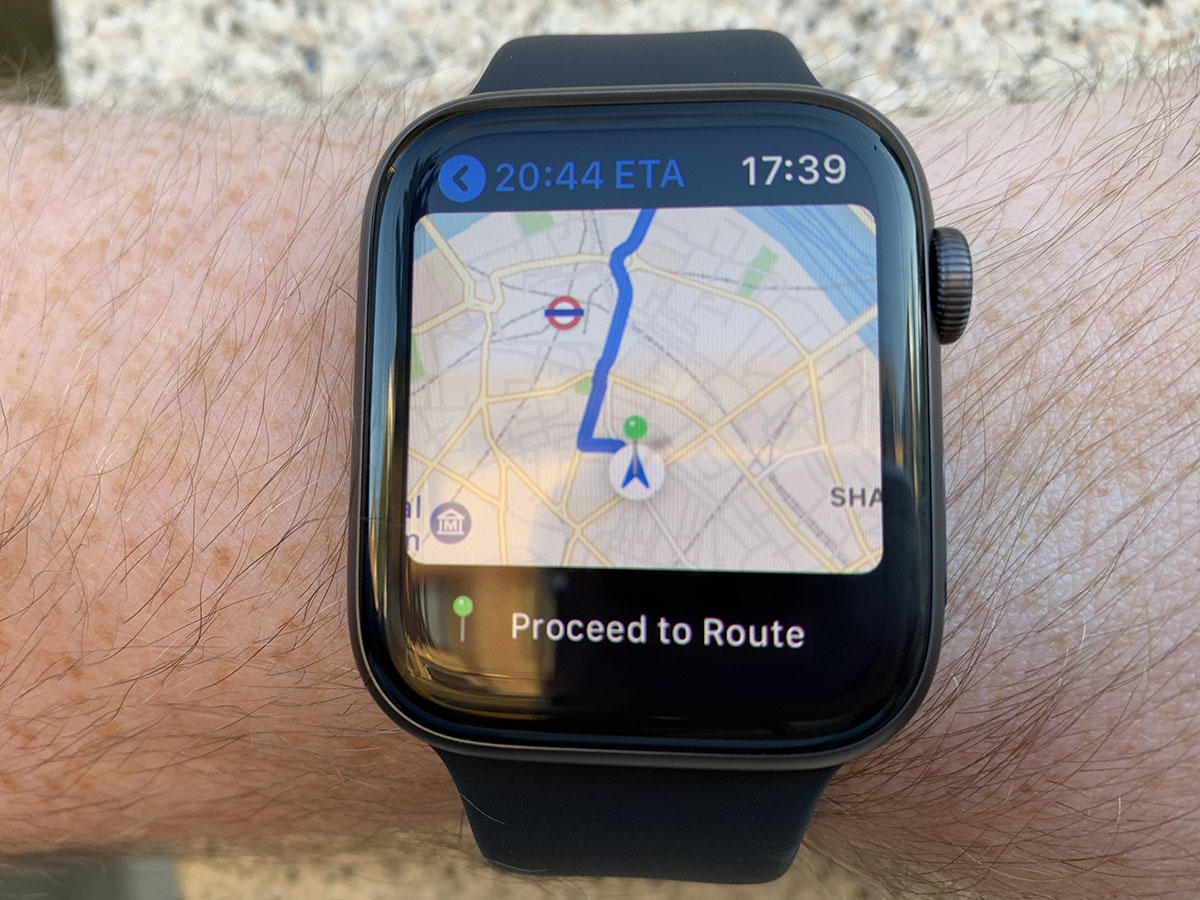
STRONG SIGNALS
As mentioned, we had access to both the Cellular and non-Cellular version of the Apple Watch 4 for review. Apple claims that improvements to the back and the front of the watch means that signals are stronger, meaning better cellular performance overall. The new Watch is also available on EE and for the first time Vodafone in the UK, and we contacted both to try and arrange a cellular connection to test. As soon as we’re able to comprehensively test this option, we will update this review.
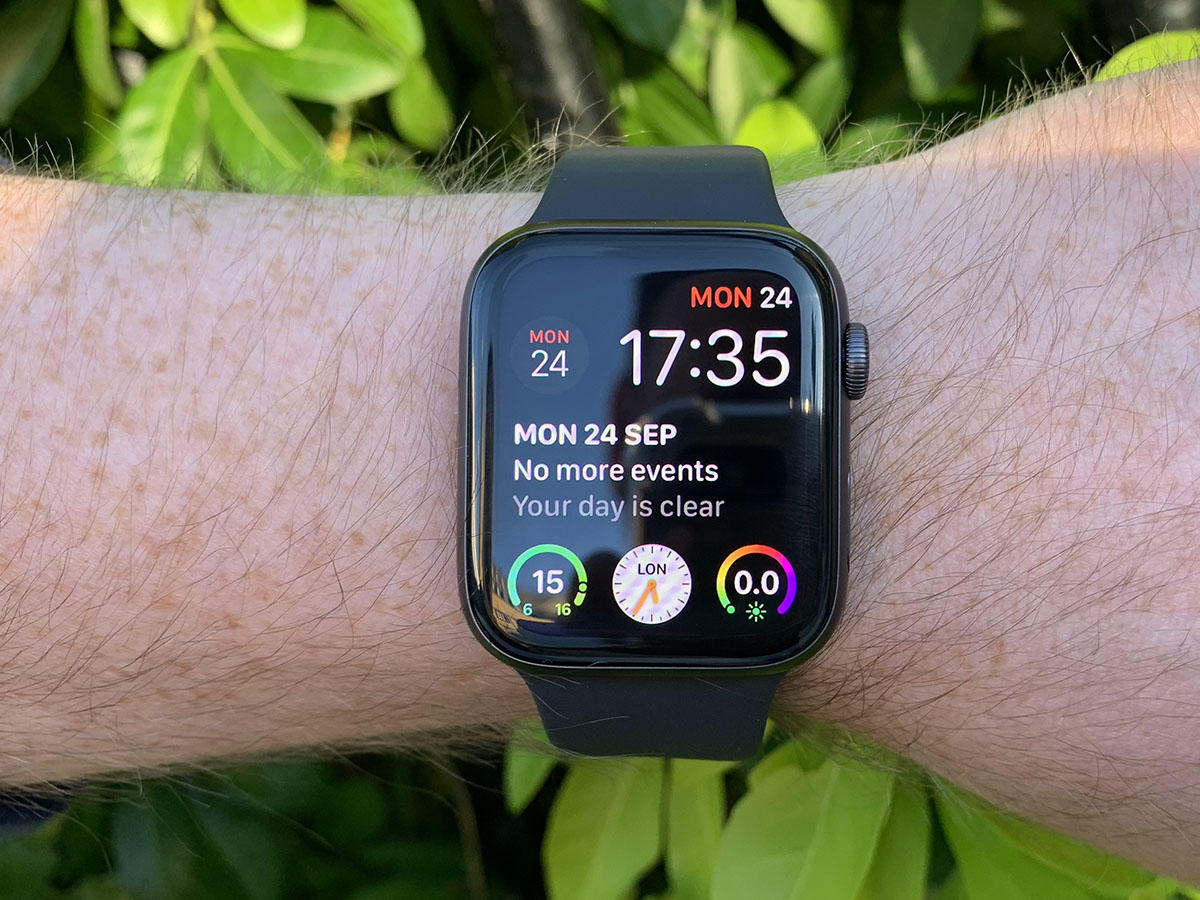
APPLE WATCH SERIES 4 VERDICT
Apple Watch Series 4 has everything going for it – the larger screen, improved processor and louder sound means it’s easier to actually do stuff on it, and it has a load of health features that just aren’t on other wearables. It’s sadly more expensive than the previous generation, but it does do a lot of things to justify that extra outlay. The result is a product that is a must-buy if you are at all interested in owning a wearable but have been holding out. Whether you’re navigating somewhere using Maps, going for a run without your phone, or just wanting to keep track of your activity during the day, the Apple Watch does a great job of doing all these things and more. Apple Watch Series 4 is the best smart watch available, and a significant improvement on the previous generation.


